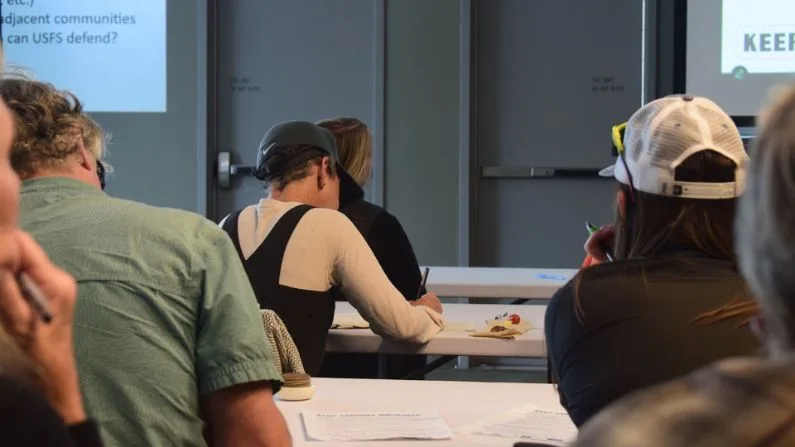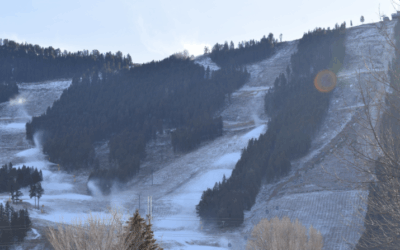Five national and local advocacy groups recently rallied over a dozen attendees at the Teton County Library to write letters to the Caribou-Targhee National Forest.
In a presentation, they said Grand Targhee’s plans threaten backcountry access, wildlife, wilderness, water supply and quality of life on both sides of the pass, among other concerns.
In the most sweeping development scenario, Grand Targhee could expand into about 1,200 acres of neighboring Caribou-Targhee forest and build new lifts, restaurants, and ski runs in both the new areas as well as inside their current boundary.
The May 12 meeting showed one way interest groups are pushing for engagement as the June 20 public comment deadline approaches before an estimated year of deliberations.
The loudest groups are aiming to “Keep Targhee Inbounds,” as their promotional material said.
The Jackson Hole Conservation Alliance, Teton Backcountry Alliance, Winter Wildlands Alliance, Driggs-based Valley Advocates for Responsible Development and the Wyoming Wilderness Association are pushing for what they see as a “win-win.”
Jacksonite Alissa Ehrenkranz, a teacher at a local middle school, worries about losing public lands.
“The idea that we’re privileging a ski resort over the public lands and wilderness and wild spaces, is to me, really shocking and disappointing,” she said.
John Unland agrees. He moved from Vail, Colorado to Driggs, Idaho about 10 years ago, tired from the growth he saw in the larger ski town.
He said Targhee’s plans are the “tip of the spear,” that could lead Wydaho (a portmanteau of the close-knit Idaho and Wyoming towns) down a similar path.
“It’s going to really ruin and impact the culture of our community in Driggs significantly,” he said.
The five alternatives offered in the Caribou-Targhee National Forest’s draft environmental impact statement range from no expansion or upgrades, to upgrades and the 1,200-acre expansion. Two of the alternatives are all upgrades in bounds and a partial expansion. In what the groups see as a “win-win” scenario, Grand Targhee would be allowed to build projects in-bounds but not expand into the Mono Trees or South Bowl areas.
National and local nonprofits have been poring over the 600-page document since the forest quietly released it in late March.
The groups urged attendees to look at the alternatives as an “a la carte menu” where they can choose what they are concerned about for the future of the resort.
They challenged attendees to make specific comments and offer suggestions and ask themselves, “is there really a public need?” It’s a question the forest service has to be able answer, according to the environmental groups.
Presenters pointed to Jackson Hole Mountain Resort’s approximately 2,500 acres of skiiable terrain, a little less than Grand Targhee’s, despite seeing far more skiers.
The ski resort has been saying it needs to keep up with skier demand and expansion would provide a better skiing experience.
A former National Forest Supervisor, Laura Jo West, who spoke briefly at the meeting, added that national forests have a “bias for action” and that the ski industry is a powerful lobbyist that would benefit from expansion.
Unland said any development or expansion at all is a “compromise” that’s not in the public’s interest.
“This whole thing is about money, there’s no other need,” Unland said, “we’re not dying to have more acres over there. There’s not a need, that’s different than a desire.”
A final environmental impact statement is expected toward the end of 2025, with a final decision next spring. Public comment on the current draft environmental statement ends June 20.






